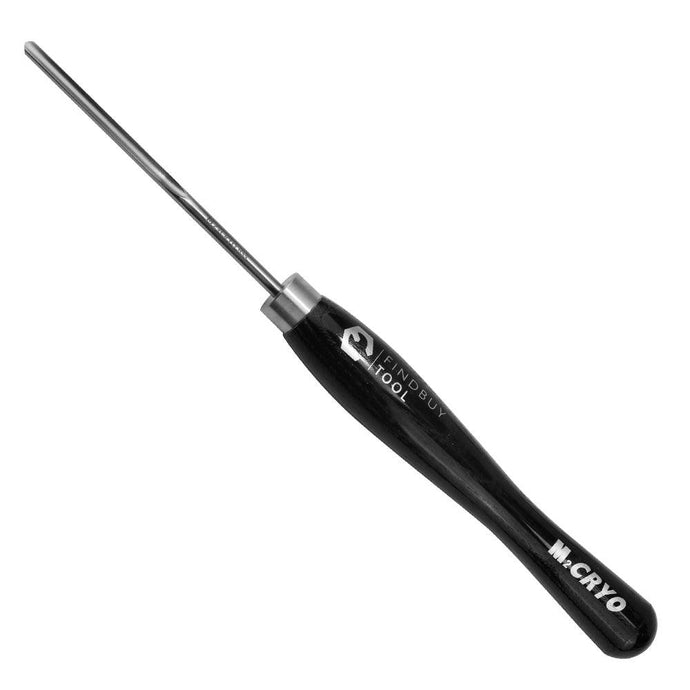
In woodturing, having the right tools for specific tasks is essential for achieving the best results. Two of the most commonly used tools are the spindle gouge and the bowl gouge. While they may look similar to the untrained eye, they serve different purposes and have distinct characteristics that make them uniquely suited to certain types of work. Understanding the difference between a spindle gouge and a bowl gouge is critical for woodturners to make informed decisions about which tool to use for each project, whether shaping delicate spindles or hollowing out a deep bowl.
The primary difference between a spindle gouge and a bowl gouge lies in their design and the specific tasks they are used for. A spindle gouge is designed for turning long, cylindrical pieces of wood, such as spindles, chair legs, or decorative finials. Its shallow flute and more rounded, often U-shaped profile make it ideal for creating smooth curves, beads, and coves along the length of the spindle. The spindle gouge excels at detail work, where precision and control are essential. Its shape allows for delicate cuts and fine detail without removing too much material too quickly, making it perfect for tasks that require subtle shaping.
On the other hand, the bowl gouge is designed for hollowing out and shaping the inside and outside of bowls and other larger, more complex forms. Its deeper flute, often V- or U-shaped, gives it a greater ability to remove material quickly and efficiently, which is necessary when working on larger projects. The bowl gouge is typically used for roughing out the interior of a bowl, creating smooth curves on the outside, and refining the overall shape. Because it is designed to handle the stresses involved in turning large, heavy workpieces, the bowl gouge is made from heavier and stronger steel than the spindle gouge, making it more robust for heavy-duty cutting.
Another key difference between the two tools is how they handle wood grain. Spindle gouges are used primarily for spindle work, where the wood grain runs parallel to the lathe bed. This orientation makes the wood easier to cut with less resistance, and the spindle gouge's shallow profile is well-suited for cutting along the grain. In contrast, the bowl gouge is designed to handle end-grain and cross-grain cuts, which are more challenging due to the grain's orientation being perpendicular to the lathe bed. The deeper flute of the bowl gouge allows it to cut through these tougher grains more effectively, without causing tear-out or chatter.
The size and shape of the cutting edge also set these two tools apart. A spindle gouge typically has a more rounded, shallow cutting edge, which allows for smooth, sweeping cuts on detailed work. This makes it perfect for creating beads, coves, and other intricate shapes. The tool's relatively small size and fine point give the woodturner a high degree of control, allowing for precise detailing that is essential in spindle work. The bowl gouge, on the other hand, has a more aggressive cutting edge, often with a swept-back grind that allows for deeper, more controlled cuts in larger workpieces. The broader cutting surface of the bowl gouge is better suited for removing large amounts of material quickly, making it ideal for hollowing out the interior of bowls or refining the outer curves.
When it comes to versatility, the spindle gouge is more limited in its applications compared to the bowl gouge. While the spindle gouge is excellent for turning spindles and other long, narrow pieces, it is not suitable for bowl turning or hollowing out large forms. Attempting to use a spindle gouge for bowl work can lead to catches or even damage to the tool, as it is not designed to handle the forces involved in turning larger pieces of wood. Conversely, while the bowl gouge is specifically designed for turning bowls, it can also be used for certain spindle tasks, especially when roughing out larger shapes. However, its larger size and more aggressive cutting edge make it less suited for the fine detail work that a spindle gouge excels at.
In terms of safety and ease of use, both tools require proper technique and practice to use effectively, but bowl gouges tend to be more challenging for beginners. The deeper cuts and the larger size of the tool mean that the woodturner must have a firm grip and a good understanding of tool control to avoid catches or accidents. Spindle gouges, on the other hand, are generally easier to control, making them a good starting point for novice woodturners. However, both tools must be used with care, and understanding the correct angles, speeds, and pressures is essential for achieving smooth, clean cuts.
In summary, the spindle gouge and the bowl gouge are two essential tools in the woodturner's arsenal, each designed for specific tasks. The spindle gouge's shallow flute and fine edge make it perfect for detailed spindle work, while the deeper, more robust bowl gouge is ideal for shaping and hollowing out larger forms like bowls. Knowing when to use each tool - and understanding their strengths and limitations - can significantly improve the quality of your woodturning projects. By mastering both, woodturners can tackle a wide range of creative and functional projects with confidence and precision.